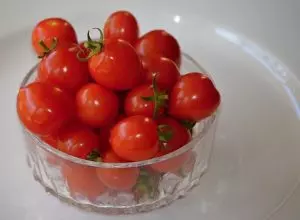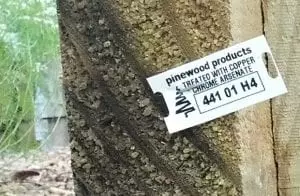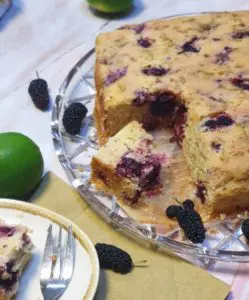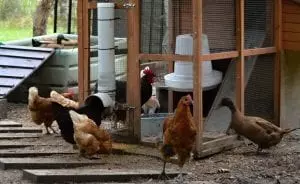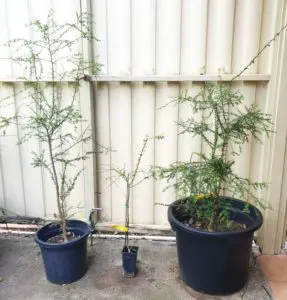This is a quick down and dirty guide about how you can easily get free food plants from your own garden without hardly any effort at all!
Often we see garden TV shows showcasing vegetable seedlings or seeds purchased from a garden centre, but what the presenter doesn’t often do is explain how easy most of these plants are to propagate yourself completely for free.
I have nothing against buying plants and seeds from good retailers and even from places like eBay but continuously buying plants particularly annuals each season can be unnecessarily costly. I get a great majority of my food plants for free by either saving the seed from my vegetable garden or taking cuttings/sucker growth (pups) from mature plants.
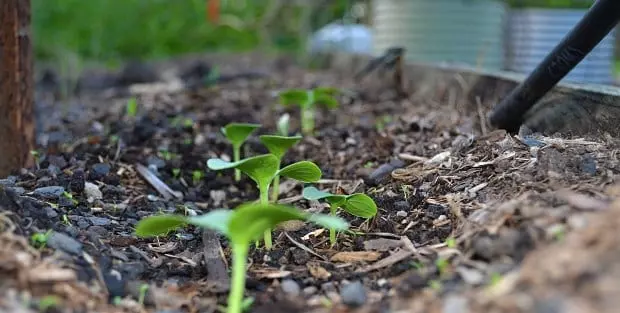
Cucumber seedlings grown from saved seed given to me by a friend (image above)
Letting plants go to seed just doesn’t help me out it also helps beneficial insects like hover flies and bees to thrive in my garden and visit my plants to help keep a natural balance.
What I have found over the years in my garden is how certain plants have adapted to my micro climate simply because I have left them self-seed! The subsequent plants come back the next season at a time of their choosing and germinate right when the best growing conditions actually suit them. This makes for stronger plants which are more resistant to disease and pests and therefore are usually more productive also.

There are a few loose points to follow when collecting seed or propagating plants from the garden and these are:
- Heritage seeds/plants – These varieties are the traditional plants and seeds, which have been selected and “saved” by past generations due to their special characteristics and are true to type (meaning they will grow the same plant from their own seeds). I like to grow heritage plants more than any other because of seed saving reasons and the fact they are tried, tested, and grown to eat rather than just look good on a supermarket shelf in lieu of taste.
- Hybrid plants – Some plants and seed sold from retailers are hybrids (sometimes sold as “F1”) and are created by crossing two specially selected plants to breed a more stable and disease resistant variety. This cross breeding is done in a controlled environment and whilst a superior plant is usually the outcome it also means gardeners will need to continue to buy the seeds or plants rather than save their own. It’s important to note saving seed from hybrid plants will usually result in inferior plants or throwbacks to one of the parent plants.
- Cross pollination – When collecting seeds from a home-grown environment there is a big risk that the seeds can become cross pollinated and therefore not exactly true to type. Some plants are more susceptible to cross pollination than others but if you are worried about cross pollination (or contamination) try to grow only the one cultivar (type of that particular plant) in your garden. Having said that, you can get lucky and inadvertently produce a variation of plant which has been cross pollinated that you may actually like so not all cross pollination is bad.
- Seed/fruit selection – When saving seed choose the best looking fruit and make sure it has fully developed (or ripened). Make sure the plant the
 seed is being saved from is not diseased – seeds such as tomatoes can be “cleaned” through mimicking natural fermentation by letting the seeds ferment in an open container with its own juices or a bit of water for about a week before straining, washing, and drying the seeds on paper towing. This method is also a good way to remove the excess pulp from around the seed.
seed is being saved from is not diseased – seeds such as tomatoes can be “cleaned” through mimicking natural fermentation by letting the seeds ferment in an open container with its own juices or a bit of water for about a week before straining, washing, and drying the seeds on paper towing. This method is also a good way to remove the excess pulp from around the seed. - Seed producing – Some plants “go to seed” easily and other plants need to be left grow right through the season and into maturity before they will flower. Not all plants go to seed in the same season – carrots for example usually go to seed in the second season so the plant may take up space in the garden for possibly 12 months in some cases before flowering.
- Seed storage and viability – Seeds collected from the backyard are usually stored in containers or packets rather than professionally vacuum sealed and this typically means the seed will not last as long but if they are collected to use for the next season it doesn’t really matter. Also, seeds should be stored ideally in a cool, dark, place and kept away from moisture or high humidity. To check if the seed is actually viable just place a quantity on some wet paper towelling and if most seeds sprout over several days then the batch is fine.
- Self-sowing – This is when plants develop in the garden by themselves usually from seed dropped by parent plants previously grown in the garden or carried in via compost. Most of the time self-sown plants grow well because they germinate naturally under the right conditions and time of year. If possible try and let the self-sown plant stay in situ but if it happens to start growing in an inappropriate place then simply move the seedling to a more suitable area. Leaving some plants go to seed in the garden to self-sow can be an easy and excellent way to grow free produce.
- Cuttings, pups, runners – Some plants grow readily from simple cuttings. For example, pruned tomato stems at about 30 cm long can be left with just a few leaves on top and buried deeply into the garden to make new plants. Pups (small sucker growths usually at the base of the parent plant) can be cut away and replanted – globe artichokes are a good example. Runners are similar to pups but are spread more away from the parent plant by a vine-like stem such as strawberries and can be removed to form new plants. All these methods, done correctly, are usually a faster way to grow new plants than germinating from seed.

All this tumeric in the image above started from just one rhizome divided over just one season!
Making new plants for free right from your own garden is easy, it saves money, grows stronger plants, and overall is more productive than always buying new plants every season. Plus, if you’re lucky you may even cross breed something awesome by complete accident and invent your variety of plant!
If you’d like to share any of your growing tips feel free to place them below in the comments section (providing your email is not necessary). Also, please consider joining our growing forum and become part of our fun online community!
Here is a video I made about top self-seeding free and easy food plants from the garden – enjoy!
Mark Valencia – Editor SSM
Look, and see the Earth through her eyes…

 seed is being saved from is not diseased – seeds such as tomatoes can be “cleaned” through mimicking natural fermentation by letting the seeds ferment in an open container with its own juices or a bit of water for about a week before straining, washing, and drying the seeds on paper towing. This method is also a good way to remove the excess pulp from around the seed.
seed is being saved from is not diseased – seeds such as tomatoes can be “cleaned” through mimicking natural fermentation by letting the seeds ferment in an open container with its own juices or a bit of water for about a week before straining, washing, and drying the seeds on paper towing. This method is also a good way to remove the excess pulp from around the seed. 
